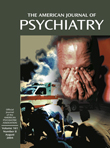Dr. Mondimore presents a thorough, carefully crafted book that he wrote as a guide for parents. His comprehensive approach also makes this book a very helpful teaching tool for use with medical students, residents, psychologists, and mental health professionals of all backgrounds.
By organizing the book into four parts—Symptoms, Syndromes, and Diagnosis; Treatment; Variations, Causes, and Connections; and Getting Better and Staying Well—Dr. Mondimore gives himself multiple opportunities to address all of the questions frequently asked by parents and other caregivers. His emphasis is on elevating parents’ awareness of the seriousness of depression in adolescents. He also consistently directs those caring for teenagers to the treatment modalities currently available and to resources for information and support.
Defining commonly used terms and taking a historical view of the syndromes and symptoms described help the reader appreciate the evolution of medical and psychiatric thinking about depression. Dr. Mondimore guides his readers through the mood disorder categories of DSM-IV and points out the limitations of overreliance on the use of checklists to make a psychiatric diagnosis. He uses case examples to show the complexity of making an accurate diagnosis. He also discusses the importance of the psychiatrist’s training, experience, and judgment in the assessment of the complex symptom pictures so often encountered in adolescents.
The discussion of treatment modalities includes all of the pharmacological categories used for adolescents. Dr. Mondimore also discusses the most frequently used herbal and nutritional supplements, ECT, transcranial magnetic stimulation, and vagal nerve stimulation. His chapter on counseling and psychotherapy provides clear and helpful discussions of the currently available types of treatment.
In his discussion of the most frequent comorbid conditions complicating depressive spectrum disorders of adolescence, Dr. Mondimore gives clear and concise material on attention deficit hyperactivity disorder, substance abuse, eating disorders, and self-harming behaviors, including “cutting.” He consistently points out both the seriousness and the treatability of depression during the teenage years.
Looking toward the future in his chapter on genetics, the author provides an overview of the great promise genetics holds for more effective help in the treatment of depression. Dr. Mondimore is extremely practical in his section on Getting Better and Staying Well. His understanding of the effects of managed care on the relationships of psychiatrists to patients and their families enables him to provide practical advice to parents. In pointing out the need for families to have a well thought out and continuously updated emergency plan for managing any complications that arise, Dr. Mondimore provides a real service.
As I prepared this brief review, I found myself advising families to obtain their own copy of Dr. Mondimore’s well-written, clear, and valuable book.

